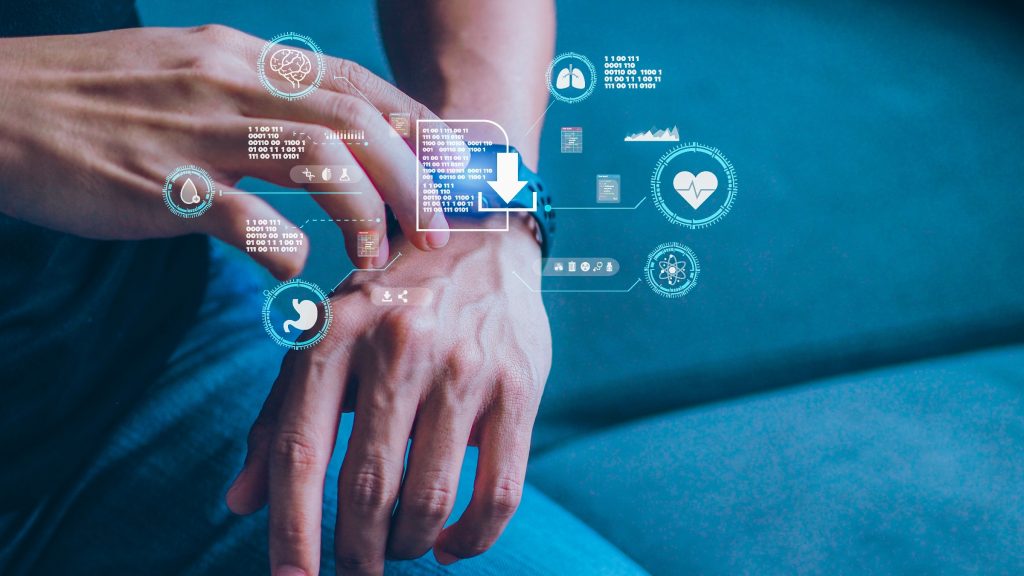
The medical industry has witnessed a boom in its medical solutions that goes back to the integration of AI and wearable technology in healthcare, which is facilitating the diagnosis process by allowing patients to gain direct access to their health data from home.
AI healthcare wearables that take the form of rings, watches and focus on basic metrics like steps and sleep patterns, can now monitor important health parameters such as blood pressure, heart rate, body temperature, and also detect early signs of illness. The integration of AI wearable devices in healthcare systems, and especially getting the FDA approval, is a step to slowly transition toward home-based healthcare in the future.
AI and Wearable Technology in Healthcare
The development of artificial intelligence (AI) and wearable tech in the medical field is shifting the perception of medical care, providing for patients greater and more personalized control over their medical data. “The FDA is approving over-the-counter continuous glucose monitoring (CGM) patches,” explains Shantanu Bhalerao, Vice President at Infineon. This emphasizes that the industry is committed to providing a comfortable experience in healthcare.
Many ask whether people should support AI and wearable technology in healthcare. Well, AI wearables in healthcare are developed smarter, covering a wide range of applications from fitness to diagnosis. Ryan Bauer, Director at Siemens Digital Industries Software, explains that “medical devices are getting smarter for multiple types of applications, and there’s a trend toward more wearable and home-use medical devices.” However, he doesn’t ignore the fact that challenges are persistent, especially in the devices in terms of power consumption, battery life, and device miniaturization.
Whether people support it or not, AI and machine learning have become essential to score progress in processing the vast amounts of healthcare data, and with the presence of wearable devices, AI is much more needed than ever. AI algorithms can analyze complex data sets to detect severe conditions, like breast cancer, Parkinson and more, in much earlier times than traditional diagnosis. The power of AI and wearable technology in healthcare lies in the capability of screening for these illnesses in real-time, making the diagnosis easily accessible.
There are devices like the migraine Bluetooth connected patch developed by Infineon and Theranica that use sub-threshold pain signals to distract the brain from migraine pain, while eliminating drug solutions for migraine pain. This determines the potential of wearable technology in healthcare.
Challenges Faced
With the growing demand for AI healthcare wearables, balancing power efficiency with functionality is a main challenge. According to Satish Ganesan from Synaptics, “low power leakage is especially important for modern nodes like 7nm.”
Security also is a huge concern. Patients are much warried about personal data leakage that might happen from cyber threats since all technologies are facing this damaging threat with bare government intervention. The fact that warble medical devices are a part of everyday life alarms people, therefore, ensuring that data remains protected is a top priority.
The future of wearable technology in healthcare is promising, however, it depends highly on robust security measures. As more people rely on wearables, the more the percentage of data breaches increases. Therefore, will medical companies succeed to ensure a 100% secure wearable devices ?
Inside Telecom provides you with an extensive list of content covering all aspects of the Tech industry. Keep an eye on our Medtech section to stay informed and updated with our daily articles.